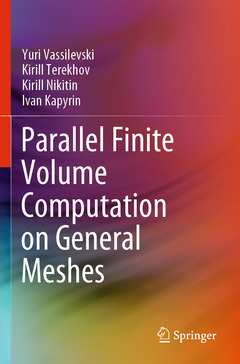Description
Parallel Finite Volume Computation on General Meshes, 1st ed. 2020
Language: English
Subjects for Parallel Finite Volume Computation on General Meshes:
Publication date: 06-2021
186 p. · 15.5x23.5 cm · Paperback
Publication date: 06-2020
186 p. · 15.5x23.5 cm · Hardback
Description
/li>Contents
/li>Biography
/li>Comment
/li>
This book presents a systematic methodology for the development of parallel multi-physics models and its implementation in geophysical and biomedical applications. The methodology includes conservative discretization methods for partial differential equations on general meshes, as well as data structures and algorithms for organizing parallel simulations on general meshes. The structures and algorithms form the core of the INMOST (Integrated Numerical Modelling Object-oriented Supercomputing Technologies) platform for the development of parallel models on general meshes.
The authors consider applications for addressing specific geophysical and biomedical challenges, including radioactive contaminant propagation with subsurface waters, reservoir simulation, and clot formation in blood flows.
The book gathers all the components of this methodology, from algorithms and numerical methods to the open-source software, as well as examples of practical applications, in a single source, making it a valuable asset for applied mathematicians, computer scientists, and engineers alike.Chapter 1 - Introduction.- Chapter 2 - Monotone finite volume method on general meshes.- Chapter 3 - Application of MFV in reservoir simulatio.- Chapter 4 - Application of FVM in modelling of subsurface radionuclide migration.- Chapter 5 - Application of MFV in modelling of coagulation of blood flow.- Chapter 6 - INMOST platform technologies for numerical model development.
These books may interest you

Polyhedral Methods in Geosciences 147.69 €



